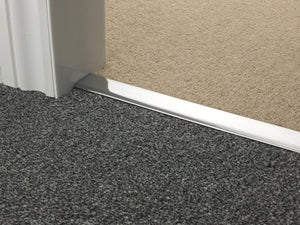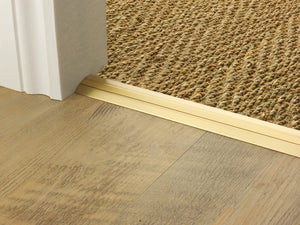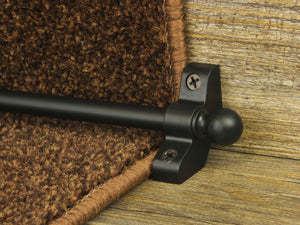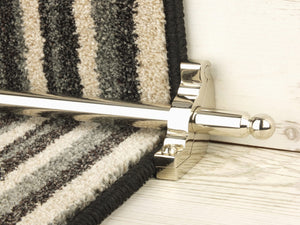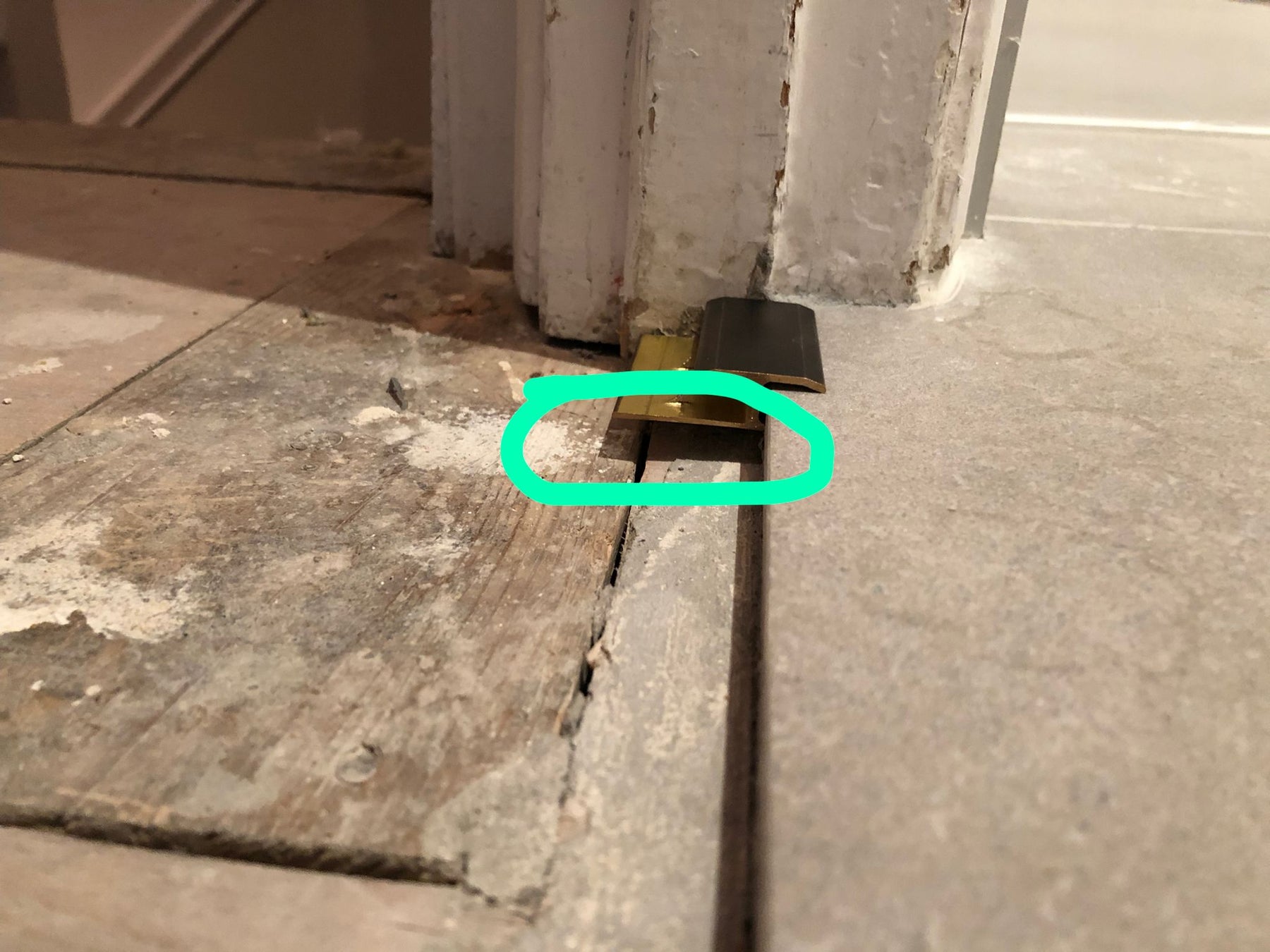
What is a Z bar carpet to hard floor joining strip?
We all know what a carpet is but not many outside the carpet industry know what a Z Bar is, nor when to install it. Likewise, what is meant by the term “hard floor”? In this article, I’ll explain the trade-speak terminology and explain when a Z Bar carpet to hard floor is the perfect way to join two floorcoverings.
Z bar transition strip profile shape
The Z Bar is named after the outline shape of this profile strip. Look at the side of it and you will see it resembles the silhouette of the letter “Z”. The top horizontal line represents the visible profile strip which neatly overlaps the carpet and hard floorcovering, whilst the bottom horizontal line is the hooked base strip which attaches to the floor and holds the carpet in place. In between the two is the joining line of the Z, which represents the vertical, metal upright which can be napped down for a snug fit.
What does “napped down” mean?
Yes, another trade term! Napped down refers to how a fitter will exert pressure onto the fitted Z bar to trigger a slight compression of the upright, in so doing compressing the carpet slightly. It ensures the carpet is securely gripped.
What is the difference between hard and soft flooring?
Generally speaking, hard floorcoverings refer to types of floorcovering which do not easily bend and are resilient. The most popular hard floorcoverings include:
Hard flooring:
- Porcelain, ceramic tiles, terracotta tiles
- Wood and laminate
- Stone
- Rubber
- Cork
- Luxury vinyl (LVT)
Soft flooring:
This is flooring which is flexible and/or with some “give” to it. It tends to have a texture which means you are unable to stick to the surface.
- Carpet and flexible carpet tiles
- Natural flooring such as sisal, seagrass
When should you use a Z transition strip?
The Z bar carpet strip is designed to join a carpet to a hard floorcovering (see above), neatly covering up the cut end edge of the carpet and hard flooring. This prevents the cut edge of your carpet fraying and protects the vulnerable edge of the tiles or wood etc. You therefore use a Z bar carpet to tile, Z bar carpet to wood and so on.
How to line up your Z bar carpet to hard floor?
The objective is for any interior door threshold to lie directly under a closed door. In this way, you only see it when the door is open. Typically, it therefore lines up with the door jamb.
In reality, this may be difficult to achieve if one or other of the floors has been retro fitted with little consideration to where the door shuts. In such cases, it can be worthwhile choosing a wider door bar to help straddle the gap.
How to fit

The surface on which you lay the hard flooring on one side and the underlay and carpet on the other must be level i.e. flat with each other. This is because the hooked base of the profile has to be fitted flat for it to be able to grip the carpet.
However, it is possible to chock up, minimally, underneath the Z bar’s hooked base section by a few millimetres with mdf shims, if you need to slightly raise it enough that the visible threshold neatly fits over the top of the surface of the installed hard flooring.
- Measure the width of the doorway and mark off on your Z bar the appropriate length and then cut with a sharp hack-saw. If you use a piece of masking tape to mark the length, this helps prevent the saw from slipping.
- The, cut off the corners where the door jamb will be.
- Lie the Z bar base on the carpet side, flat on the floor and then nail or glue it to the floor. This should mean the visible door bar sits neatly over the edge of the adjacent hard flooring.
- Stretch the carpet onto the Z bar hooks. The underlay stops short of the Z bar.
- Then push the edge of the carpet right under the visible bar with a screwdriver or carpet tucker to ensure the carpet grips firmly.
What if my two floors are not level with each other?
If the floor on which your carpet is fitted is lower than the floor on which the tiles or other hard flooring is installed, then fitting Easyshims can solve the issue.
Choose the right high quality Z bars
We specialise in quality door thresholds from UK manufacturers which design for longevity and smart looks. The Premier and Feline ranges are manufactured from solid brass, ensuring they do not easily dent or bend.
Premier Slim Z
At just 22mm wide, this brass Z bar is discreet and available in ten different metal finishes. However, given the bar is only 22mm wide, it is not suitable if your hard flooring experiences expansion e.g. wood and laminate flooring, as the door bar is insufficiently wide to cater for this. In such circumstances, best to use one of the other designs listed.

Premier Z9
The best seller of our quality z bars, this design is 30mm wide and available in ten different metal finishes. Ideal for carpets which compress down to around 9mm thick. It is supplied in the Double Z9 format i.e. to join carpet to carpet, and easily converts to the Z bar option.

Premier Z13
Similar to the Premier Z9 but suitable for thicker carpets which compress down to around 13mm when stretched onto the hooked pins.
Premier Z 4
Ideal for joining low pile carpets or flat weaves, which compress down to around 4mm thick, to hard floorcoverings. Again, they are adapted from the carpet to carpet option.
Feline 1
The ultimate solid brass Z bar, popular with interior designers and those who like the best. Manufactured in solid brass the Feline 1s have a pristine finish and are available in a choice of four finishes.
AL/10
This design is produced in high quality aluminium and offers fashionable chrome and brushed steel finishes.

